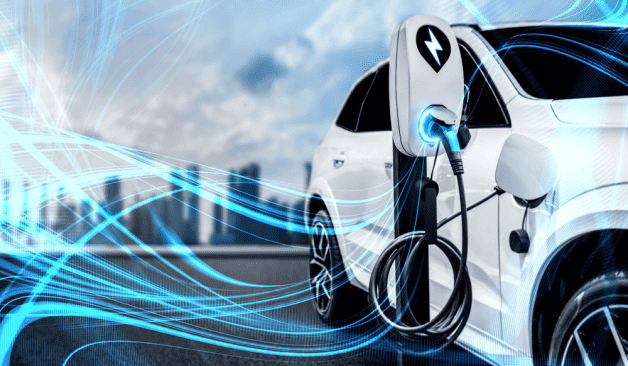
Government New E-vehicle Policy: Impact on Indian Markets
The government of India approved the new EV policy on 15th March 2024. This new scheme has been approved to boost the Make in India initiative, which has been the top priority of the Indian Government in recent years. The scheme will promote E-vehicle with the latest technology to be manufactured in India, making India a manufacturing hub of E-vehicle. Before understanding the new EV policy in detail, first, let us look at the Indian e-vehicle market.
Indian E-Vehicle Market
India is one of the fastest-growing automotive markets in the world. When it comes to ranking, India is ranked as 3rd largest automobile market in the world, with the current market size of the automotive sector as Rs 12.5 lakh crore($ 151 billion). By 2030, the automotive sector is expected to cross Rs 24.9 lakh crore($ 300 Billion). The automotive industry contributes over 7.1% of India's GDP growth.
As per the NITI Aayog report, EV penetration in various categories in 2030 is likely to be as below:
- Two-wheelers: 35-40%
- Private 4 Wheelers: 9-11 %
- Shared 4 Wheelers: 20-25%
- Buses: 13-16%
With Such a huge opportunity, the Indian government wants no stone unturned to strengthen the EV ecosystem and make India a manufacturing hub of E-vehicles. Let us now understand the government's new EV policy, which was approved on 15th March 2024.
Pre-requisites for operating: Scheme Details
This scheme will mainly attract investment from Global EV manufacturers and will promote India as a manufacturing destination for EVs on a global map. Below are the key highlights :
- Manufacturing companies have to make a minimum investment of Rs 4,150 crore($ 500 million) to set up manufacturing facilities in India. There is no upper limit.
- The manufacturing unit should be operational and ensure to achieve a minimum of 25% & 50 %DVA (Domestic Value addition) within 3 and 5 years from the date of issuance of the approval letter by MHI (Ministry of Heavy Industries), respectively.
- Custom duty has been reduced from 70% to 15% on EV passenger cars with a minimum CIF (Cost, Insurance, Freight) value of $ 35,000 with an upper cap limit of 8000 vehicles per year. This rate will be applicable for 5 years from the date of the issuance letter by MHI, subject to meeting the minimum investment amount of RS 4150 crore($ 500 million).
- The duty foregone on the total number of EVs allowed for import would be limited to the investment made or Rs 6,484 crore (equal to incentive under the PLI scheme), whichever is lower.
- The investment commitment made by the company will have to be backed up by a bank guarantee instead of the customs duty forgone.
- The Bank guarantee will be invoked in case of non-achievement of DVA and minimum investment criteria defined under the scheme guidelines.
Pros and Cons of the Scheme
Below are the pros of the schemes:
- The scheme will attract huge investment from Foreign EV manufacturers (such as Tesla, Vinfast, etc.), which will boost the Indian economy.
- With global players entering the Indian market, India will have access to the latest and cutting-edge EV technologies.
- India's presence on the global map in EV space will be strengthened.
- More manufacturing units will create employment opportunities in India.
- This will boost up the Government Initiative of ‘Atmanirbhar Bharat' and ‘Make in India'.
- Auto ancillary companies in India will be major beneficiaries.
- With production happening in India, Indian consumers will be able to afford EV cars at lower prices.
- Other benefits: reduction in import of crude oil, reduction of Air pollution.
Here are the cons of the scheme:
- This scheme will intensify the competition for the vehicle manufacturers and auto component manufacturers already existing in India.
- The rebate is for new EV maker entrants only. Hence, may not apply to earlier movers like Hyundai and Kia.
- It could also potentially impact sales of luxury vehicles (German brands) with an increased entry of mid-to-premium EVs at competitive pricing.
Future of e-vehicles in India
The EV sector is doing well in India, with a projected 66% CAGR over the next decade. To remind you, these estimates came in before this policy. With the introduction of this policy, the competition is likely to increase, and we may see India achieving the above numbers sooner.
On the other hand, the adoption will largely depend on technological advancement (which will get a boost from this policy) in charging infrastructure, battery technologies, & EV components. EV components are advancing on both software and hardware fronts. Charging infrastructure is evolving, overcoming challenges with innovative solutions that are currently under the prototype stage, like Bidirectional Charging (V2G Technology) and Wireless Charging, reflecting a dynamic shift toward sustainability and convenience.
It won't be wrong to say that other than the promising trends, there are also challenges to overcome. However, with continued government support, technological advancements, and collaborative efforts, the future of electric vehicles in India appears bright, with the potential to revolutionize the country's transportation landscape and contribute to its sustainable development goals.
Opportunities for Indian e-vehicle producers
Once the new/foreign players come to India, it will expand the EV market and kickstart the transition to EVs by bringing in proven technology. After people feel confident of the technology, even the Indian e-vehicle producers will benefit from an increase in demand, as we have mentioned earlier. To take advantage of the scenario, we may see even the legacy players pushing the gears for faster adoption.










